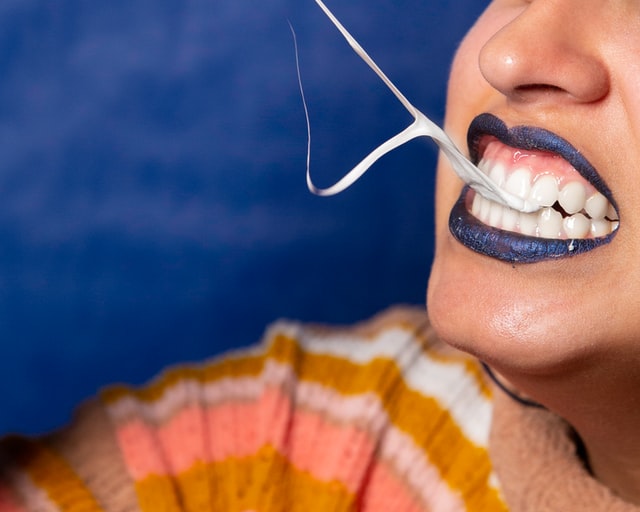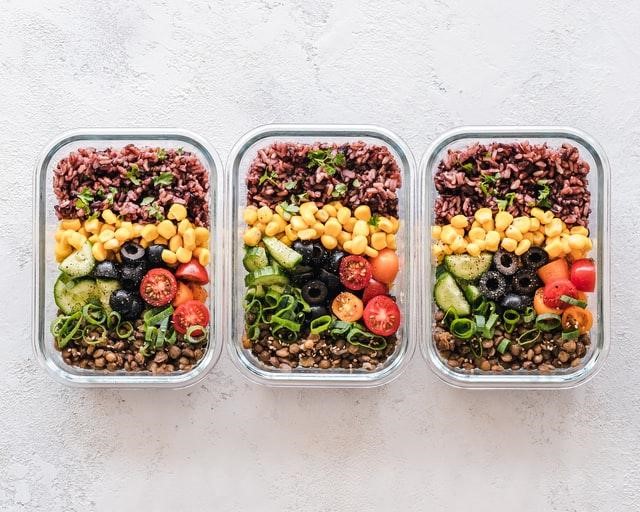
Chewing gum has been with many people practically all their lives. Children like to chew colourful, sweet balls, and adults want to refresh their breath with a peppermint tease from time to time. Although the ancient Greeks already chewed pieces of the bark of the Pistacia lentiscus gum tree, the manufacture of gum was patented in 1869.
Contents
By the end of the 19th century, gum was already similar to the one we know today. Today, chewing gum is made from polymer for economical and quality reasons. We can choose chewing gum in strips, bars, or lozenges.
Do we chew for health or... disease?

Based on numerous studies conducted worldwide, a simple conclusion is that gum is healthy as long as we chew it in moderation. And if we reach for the one without sugar. First of all, chewing is suitable for your oral hygiene. Gum neutralizes saliva pH, strengthens the enamel, and freshens breath. The natural pH in your mouth will be restored by chewing gum for a quarter of an hour.
Gum also increases the secretion of saliva, which in turn reduces the growth of bacteria and prevents gum infections. It is advisable to chew gum after each meal - this way, you clean the teeth and interdental spaces from food debris. Remember, however, that gum does not replace regular brushing of teeth. It is a fact that chewing gum prevents diabetes, but be careful - if it is sweetened or fruit gum, the effect may be the opposite.
Our body thinks of oral activity - food! Chewing, drinking sweet (fruit) teas, constant snacking, or, for example, drinking one cup of coffee all day long (I know such cases:) all cause an insulin "discharge." od! Even chewing gum gives a signal for insulin secretion. Bombarding the digestive system with carbohydrates and the resulting constant secretion of insulin leads at some point to a cell revolt. They simply say STOP! They become resistant to insulin.
Another factor contributing to insulin resistance development is dairy products, especially those mass-produced from the store. Some people call it "evil on paper." Dairy products contain growth hormones (affect hormone balance - insulin), antibiotics, stimulants, and steroids. They impair the bacterial flora and stimulate the pancreas to produce insulin.
Homogenized dairy products, i.e., dairy products where the fat is already broken down into small balls with leaky intestines, allow this fat to pass into the bloodstream. This, in turn, can cause or aggravate inflammation.
Can you chew gum if you have diabetes?

Yes, diabetics have no problem chewing gum. Of course, diabetics should chew sugarless gum. Besides being good for oral hygiene, chewing sugar-free gum can also boost your mood and relieve stress! Sugar-free gum is safe to chew if you have diabetes because it contains no sugars.
Your emotional stability is critical to staying healthy if you have diabetes (or lack thereof). Chewing sugar-free gum after or between meals helps maintain emotional stability by stimulating saliva production, facilitating food digestion, and supporting oral health.
It may be surprised how many types of chewing gum are on the market today, with varying degrees of sweetness depending on the user's preference - but there really isn't much difference between them other than the flavour and sweeteners used, while the basic ingredients are essentially the same. Sugar-free chewing gum is a really good option for diabetics.
What does insulin cause?

Insulin (high) primarily causes cravings for sweets, processed foods, and a constant desire to eat. It is associated with spikes and drops in sugar. It makes us always think about food. When the pancreas is "used" to releasing too much insulin, the cells quickly take up sugar, and this can cause nausea, fainting, and fatigue - the brain doesn't get enough fuel! What do we do then? We reach for a quick snack. Whatever we have "at hand," we eat again, and the circle is closed.
Insulin hinders weight loss by blocking another (antagonistic) hormone called glucagon, which acts between meals, that is, 4 hours after eating. Glucagon stimulates the breakdown of glycogen in the liver (we have energy between meals), but most importantly, it burns fat (breakdown of trig glycerides). The conclusion is simple: if insulin is high (frequent eating, snacking, chewing gum, teas), glucagon has no chance to be active, and therefore weight reduction is blocked.
This hormone also interferes w the melatonin (Corti of-insulin) production, aff acting sleep quality. It causes selective absorption, meaning it takes away from one and gives to another (glucose to fat tissues and not the brain).
Diet

It is vital for the most successful people to follow a low or deficient carbohydrate diet. We are simply limiting what led to insulin resistance, namely sugars. This is a fairly logical conclusion.
We often consume too many carbohydrates relative to our daily physical activity. What we do not drink for energy purposes is "packed" into fat cells and most simply turned into fat. Carbohydrate supply must be determined individually, preferably under the guidance of a good nutrition NIST.
You need to consider all coexisting diseases, possible deficiencies, and digestive capabilities. Apart from insulin resistance, if the patient also has hypothyroidism, you can't go too low on carbs because the thyroid "likes" carbs. I usually set the number of carbs at 80 to 150 grams.
When composing a diet for insulin resistance, some ingredients have to be limited. These are obviously sugars (e.g., groats flour, rice), fruits (I usually eliminate them entirely for the first 3 months). Some vegetables, s ch as carrots, also inhibit insulin stabilization. Snacking,
I also eliminate all kinds of sweeteners from the diet plan - the exception sometimes is xylitol, which does not have such an insulinogenic e fact - when you eat something sweet, the body thinks that sugar has appeared, and insulin secretion occurs.
Usually, the first three months of this kind of "diet" are pretty restrictive. This, of course, depends on the severity of insulin resistance. This is the time to ki k-start the metabolism and stabilize insulin levels. It takes a reset for the body to notice that it has quite a bit of fat, so why not? After three months, I recommend checking your fasting insulin. A single-digit result (up to 9) is a huge success!
Physical activity

Your workout, like your diet, needs to be tailored to your individual needs. With insulin resistance, long cardio or Crossfit training is not recommended because cortisol rises (the body is focused on fighting)
There are frequent cases of people who exercise intensely, and unfortunately, they do not observe any weight t reduction. This is precisely the result of the relationship between cortisol (stress hormone) and insulin, which blocks fat burning.
Glucose is released, and as you know, this causes insulin secretion. In some cases, it is necessary to completely stop training for a while to stabilize the hormonal balance. So what to do? The best exercise forms are walking, yoga, and short interval training. With insulin resistance, short workouts are better than extended cardio.
Does a diabetes diet have to be full of sacrifices?

There are a few exceptions. The best chewing gum for diabetics undoubtedly does not contain sugar. But besides sugar, there are many other harmful ingredients in most chewing gums.
Chewing gum is a popular product, and choosing the right one can be difficult. Suppose you have diabetes or are si ply looking for a more nutritious alternative that does not contain chemicals. In that case, this article will help answer r your questions about the best chewing gums for diabetics!
When healthy sugar substitutes were not as available, diabetics faced many sacrifices many years ago. Sweet tea or baked goods were eliminated from the diabetic diet. Today, for example, sweet winter tea with citrus and cloves sweetened with erythritol can quickly warm us up on winter evenings. And baked goods with tagatose are not inferior in taste to those with sugar. Sometimes it is worth making sacrifices for your health, but it is not so difficult, thanks to modern dietetics.
Eliminate fruit juices in favour of fresh fruit and water. It was a good chance for you, although we missed the homemade cakes and winter tea drunk around the family table. We know more about diabetes and have other ways to analyze blood glucose levels.
Although it is still a demanding and challenging disease, even healthy sugar substitutes allow children with diabetes to enjoy sweets. And it's not easy to explain to a children t at they can't do what their friends can. I know something about this because diabetes runs in my family. Unfortunately, it also affects children.
Conclusion

One of the most common questions from patients with diabetes is whether they need to stop eating sweets. Are all cravings and sweets totally off-limits? The fact is that doctors and nutritionists agree that stored so etc. can be consumed only occasionally. Traditional sweets from the store have no nutritional value but have a high content of simple sugars and thus hurt the health of diabetics due to their high glycemic index.
Fortunately, today, you can find many exciting sugar substitutes on the market, so people with diabetes do not have to give up sweets completely. The most popular and recommended natural sweeteners are erythritol, stevia, and xylitol. A lesser-known alternative is tagatose. This sweetener works best for cakes. You can even make yeast cakes using tagatose.
It is also an excellent substitute for sugar in homemade bread rising on a yeast starter. They are, of course, artificial sweeteners as well, but I prefer to go for the natural ones myself. Erythritol, tagatose, stevia, and xylitol are low glycemic index sugar substitutes. A low glycemic index guarantees that it does not raise blood glucose levels rapidly and has lower calories than regular sugar.





